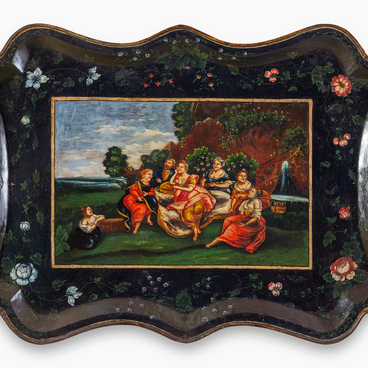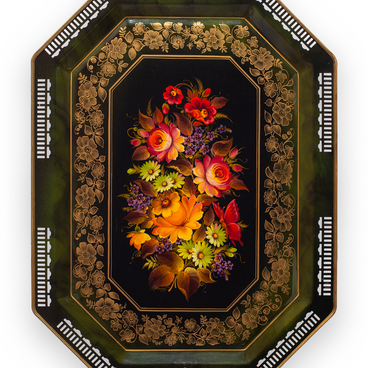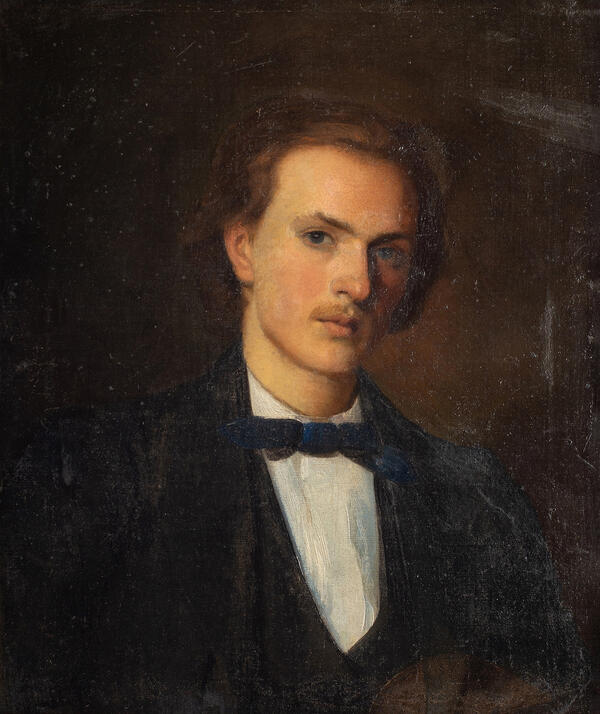Vonifaty Isaakovich Khudoyarov, the sixth of 13 children of Isaak Fyodorovich Khudoyarov and his wife Vasilisa Mikhailovna, made the study “Woman’s Head” at the very young age of 15. At the time, he was studying at the Vyysk factory school.
The supervisor of this educational institution was Vasily Alekseyevich Kozitsyn, a serf of the Demidov factory workers. In his younger years, after finishing the Vyysk school, at the behest of the Demidovs, he studied architecture in Italy under the guidance of Russian painter Karl Pavlovich Bryullov. In 1831, Vasily Kozitsyn returned to Russia, to Nizhny Tagil. It was probably under his influence that Vonifaty Khudoyarov created the work “Woman’s Head”.
On a rectangular iron plate, Vonifaty Khudoyarov reproduced a fragment of Karl Bryullov’s painting “The Last Day of Pompeii”, which had been created upon commission of Anatoly Nikolayevich Demidov in 1830–1833. Khudoyarov’s image was based on a black-and-white engraving.
The art historian Esfir Nikolayevna Atsarkina, a specialist in Bryullov’s work, noted that as early as 1839 the first lithograph of the painting appeared, which was made by Pyotr Ivanovich Razumikhin with assistance from Karl Bryullov himself.
Later, a series of lithographic images of fragments of the figures of “The Last Day of Pompeii” was issued. These works were financed by the Society for the Encouragement of Artists. By order of the Demidovs, graphic copies of the painting were sent in large quantities to the Nizhny Tagil factories and were to be kept in the offices, departments, and the Vyysk school.
Vonifaty Khudoyarov approached the matter creatively. He chose iron rather than canvas for his work: the continuity of traditions of the masters of metal painting was manifested. In addition, to copy the black-and-white engraving he chose a technique that resembled a monochrome print, which was usually created using various shades of brown.
On a white background, bounded by a triple linear outline, the artist depicted the head of a young woman under a blanket. Vonifaty Khudoyarov attempted to reproduce the expression of horror on the face. According to the plot of the original painting, the woman, along with her husband and two children, like all the inhabitants of Pompeii, fled the city to escape the eruption of the volcano Vesuvius in 79 AD.



